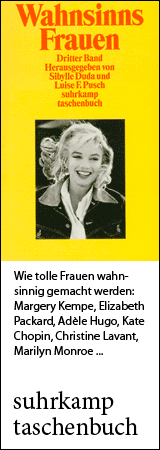Biographies Gertrude Vanderbilt Whitney

Wikimedia commons
*9 January, 1875 in New York, NY
†18 April, 1942 in New York, NY
US-American sculptor and patron of American art and artists; founder of the Whitney Museum of American Art (1930)
Biography • Literature & Sources
Biography
With courage and determination, Gertrude Vanderbilt Whitney broke the shackles of her family’s massive wealth and elevated but limiting social position to find meaning and fulfilment in the world of art. Lamenting her superficial and controlled existence as the highly eligible daughter of New York’s wealthiest family, Gertrude early wished to be a boy, and at age 4 even cut off her curls to get closer to that goal. She nevertheless followed her predestined path and married a suitably wealthy man. As the marriage relationship deteriorated, however, she cultivated her interest in art and became a recognized sculptor. Skillfully leveraging her extreme wealth and powerful connections, moreover, she supported living American artists in a uniquely effective way and founded the Whitney Museum of American Art, the first such US museum, in 1930, paving the way for a new appreciation of these artists and their modernist approaches.
The fourth child of the immensely wealthy, socially prominent New York Vanderbilts and great-granddaughter of “Commodore” Cornelius Vanderbilt, Gertrude was very conscious of her social standing, and long feared that she could only be liked because of her position, never for herself. She early longed to have an active, meaningful life beyond the endless teas, balls, and other social gatherings that made up her Gilded Age existence. A close and emotionally passionate early relationship with Esther Hunt, daughter of architect Richard Morris Hunt, gave mother Alice Vanderbilt cause for concern, and she forbade her daughter to see Esther. Gertrude subsequently entertained a number of “acceptable” beaux; she fell in love with and married Harry Payne Whitney, who eventually inherited a fortune in oil and tobacco as well as having interests in banking. The relationship gradually deteriorated, especially after the birth of a third child and a long postpartum depression. The couple increasingly pursued separate interests – Harry in sports and Gertrude in art – and relationships, but remained married. Harry died in 1930.
Gertrude had been exposed early to art through her father’s collection of fine paintings – he donated Rosa Bonheur’s Horse Fair to the Metropolitan Museum of Art – and the family’s numerous trips to European museums. She also took lessons at the Art Students League in New York, and in Paris her work attracted the interest of Rodin, who gave her private criticism. Although her family and friends looked on her artistic endeavors with indulgent amusement, Gertrude Whitney was not to be deterred: she had found her purpose in life. She exhibited her first sculptures under a pseudonym – she feared condemnation as a wealthy woman taking bread out of the mouths of starving artists if she accepted payment for her work, and of lowering the market value of art if she donated it. Although such criticism would continue to dog her, by 1910 she had begun exhibiting under her own name and soon gained recognition as a sculptor of monumental public art. Among her many public sculptures is a memorial in Washington, D. C. to the Titanic (completed in 1918, dedicated in 1931), which is considered by critics as the most important achievement of her artistic career. In it a figure with outstretched arms seems to anticipate the scene in the 1997 film in which an exultant Kate Winslet stands with Leonardo DiCaprio at the prow of the doomed ship. In 1907 Whitney established a studio in Greenwich Village and began associating more intensively and freely with other working artists of New York.
The idea of doing charitable work appealed to Whitney’s need for meaningful endeavor and was a traditionally acceptable form of activity for women of the middle and upper classes. She had already found such satisfaction and purpose at Greenwich House, a settlement house serving the immigrant poor in New York – among other activities, Whitney sponsored and gave art lessons here. And during World War I she had established and maintained a field hospital for combatants in Juilly, northwest of Paris. She personally administered to the wounded soldiers from the fall of 1914 till the spring of 1915. She now saw that she had unique possibilities to support US artists as well, whose work was at that time still dismissed by American museums and galleries in favor of established European art. With her studio she offered a place to work and exhibit; she sponsored travel and instruction for artists; and she bought many of their paintings for her own collection. With purpose and skill, Whitney took advantage of her wealth and manipulated her connections. When the Metropolitan Museum of Art turned down her offer to donate her extensive collection of American paintings – “What will we do with them, my dear lady? We have a cellar full of those things already” – she founded the Whitney Museum of American Art. Aided by her energetic and outgoing associate Juliana Force, whom she appointed director, Whitney brought public visibility to a generation of artists, including Edward Hopper and the Ashcan School of New York artists (e.g. Robert Henri, John Sloan and Malvina Hoffman), whose primary subject was the social reality of America at the start of the 20th century.
Whitney continued to sculpt till the end of her life. She was also a creative writer; having always kept extensive journals, she published one novel, Walking the Dust, in 1932, which features a lesbian relationship, under the pseudonym L. J. Webb. She continued to work on her writing, taking a writing class and consulting with well-known authors, but none of her other works was ever published. The messy, tabloid legal case challenging her sister-in-law for the custody of her niece Gloria Vanderbilt took much of her time and energy in 1934; Whitney was ultimately successful. The case has since been written about by Barbara Goldsmith (Little Gloria … Happy at Last, 1980) and Vanderbilt’s son Anderson Cooper (Vanderbilt. The Rise and Fall of an American Dynasty, with Katherine Howe, 2021) and was the subject of the TV miniseries Little Gloria … Happy at Last (1982) with Angela Lansbury as Gertrude Whitney.
(Text from 2024)
Author: Joey Horsley
Literature & Sources
Biddle, Flora Miller. (1999, 2012). The Whitney Women and the Museum They Made. A Family Memoir. New York, Skyhorse, Arcade Publishing.
Cooper, Anderson and Katherine Howe. (2021). Vanderbilt. The Rise and Fall of an American Dynasty. New York. Harper Collins.
Friedman, B.H., Gertrude Vanderbilt Whitney, Doubleday and Company New York, 1978.
Gertrude Vanderbilt Whitney. Wikipedia.
Gertrude Vanderbilt Whitney Papers, 1851–1975, bulk 1888–1942. Archives of American Art: Smithsonian.
Goldsmith, Barbara. (1980) Little Gloria … Happy at Last. New York: Knopf.
McCarthy, Kathleen D. (1991). Women's Culture: American Philanthropy and Art, 1830–1930 . Chicago and London. University of Chicago Press, 214-244.
Memorial exhibition; Gertrude Vanderbilt Whitney. New York: Whitney Museum of American art. 1943. Retrieved December 27, 2014.
Vanderbilt II, Arthur T. (August 1989). Fortune's Children: The Fall of the House of Vanderbilt. New York: Morrow.
Whitney, Gertrude Vanderbilt (1875-1942). Encyclopedia.com. (https://www.encyclopedia.com/women/encyclopedias-almanacs-transcripts-and-maps/whitney-gertrude-vanderbilt-1875-1942)
If you hold the rights to one or more of the images on this page and object to its/their appearance here, please contact Fembio.



